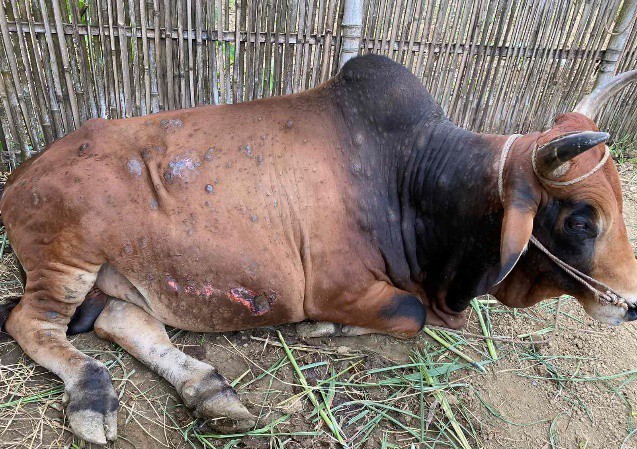 |
|
A cow infected with lumpy skin disease.
|
According to the ministry, the disease has been discovered on cows and buffaloes in Vietnam since mid-October this year with the outbreak in the northern provinces of Lang Son and Cao Bang. Up to a total 150 cows and buffaloes in Lang Son’s Huu Lung District and Cao Bang’s Ha Lang District have contracted the disease, including 11 deaths.
Lumpy skin disease virus is a double-stranded DNA virus. It is a member of the capripoxvirus genus of Poxviridae and is not infectious to humans. It is believed that arthropod vectors, direct contact, contaminated food and water and iatrogenic means (for example, repeated use of needles on different animals) can all spread the disease.
The incubation period is between 4- and 14-days post-infection. The infection rate among cows and buffaloes is around 10-20% with 1-5% being dead.
After an initial period of high fever (41°C) and swollen lymph glands, the animal may develop large, firm nodules that are up to 5 cm in diameter on the skin.
These can be found all over the body, but particularly on the head, neck, udder, scrotum and perineum.
Experts have concerned that the disease would have ravaged many localities nationwide, warning that the infection risk would widely spread in the coming time.
The Ministry of Agriculture and Rural Development has urged localities to intensify vaccination against the disease for cows and buffaloes.
Under the ministry’s instructions, all animals tested positive to the disease would have to be culled. Meanwhile, all cattle which have not yet been hit by the disease need to be quarantined to ensure safety.
Areas which have been affected by the disease have to set up stations for the cattle transport control. Dtinews/Tienphong